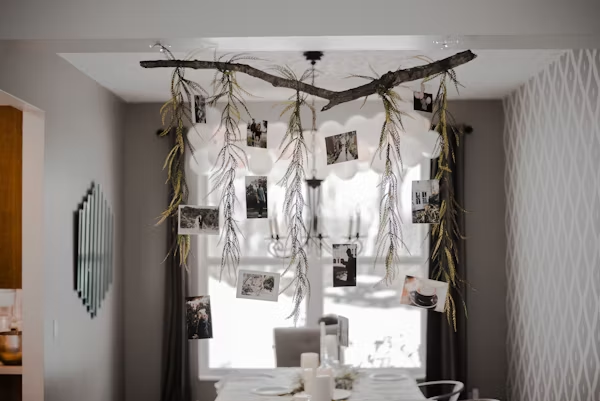Creating a warm and inviting atmosphere often starts with the smallest details. One such detail that has captured attention across cultures is pyntekvister. This term, originating from Norway, reflects a tradition of using branches and twigs in a decorative way to transform interiors into spaces of elegance and comfort. Whether you live in a bustling city or a quiet countryside, pyntekvister allows you to bring a piece of nature indoors while adding a unique artistic flair.
In this article, we will explore the beauty, history, and versatility of pyntekvister, as well as how you can use them to elevate your surroundings in both traditional and modern styles.
What is Pyntekvister?
Pyntekvister can be understood as ornamental twigs or decorative branches used to enhance living spaces. While simple in form, these natural elements serve as powerful design tools that blend rustic charm with contemporary aesthetics. They can be used bare for a minimalist look or adorned with flowers, lights, or ornaments to create seasonal and festive displays.
Cultural Roots and Significance
Norwegian culture has long celebrated the beauty of nature, and pyntekvister is an extension of that philosophy. Historically, branches and twigs were gathered to symbolize connection with the outdoors during long winters when greenery was scarce. Over time, they evolved from functional pieces—such as being used in traditional ceremonies—to modern design statements that reflect personal taste and creativity.
Why Choose Pyntekvister for Your Home?
The appeal of pyntekvister lies in their versatility. They are not just decorative; they are also symbolic. These branches can represent growth, renewal, and harmony with nature. Beyond their meaning, they are sustainable, affordable, and easy to adapt to different themes, making them a perfect addition to any home.
Different Styles of Pyntekvister
There is no single way to style pyntekvister. Some prefer leaving them natural, showcasing their organic beauty, while others paint them in bold colors or wrap them in fairy lights. Seasonal decorations—such as blossoms for spring or metallic ornaments for winter holidays—are popular choices. Minimalists often place a single, striking branch in a sleek vase, while maximalists might create elaborate arrangements full of textures and colors.
How to Incorporate Pyntekvister in Interior Design
Pyntekviste’r can seamlessly blend into various parts of your home. They can be placed in entryways to create a welcoming vibe, arranged as centerpieces for dining tables, or displayed on shelves for a touch of elegance. Their natural look complements both modern interiors and rustic designs, allowing them to act as a bridge between different styles.
DIY Ideas to Make Your Own Pyntekvister
Making your own pyntekvister arrangement can be a rewarding experience. Start by collecting branches from your surroundings—look for interesting shapes or textures. You can leave them as they are, or personalize them by adding paint, ribbons, or even hanging ornaments. For a festive twist, add seasonal flowers or dried foliage to reflect the time of year.
The Role of Sustainability in Pyntekvister
As people become more conscious of their environmental impact, pyntekvister offer an eco-friendly way to decorate. By using natural and often locally sourced materials, you reduce waste and embrace sustainable living. They can also be reused across seasons, making them both practical and planet-friendly.
Pyntekvister in Celebrations and Events
From weddings to holiday gatherings, pyntekvister play a significant role in setting the mood. They can be used as aisle decorations, table runners, or even photo backdrops. Their neutral yet striking appearance allows them to blend with various themes, whether it’s a cozy Christmas celebration or a chic garden party.
Modern Trends with Pyntekvister
Designers today are experimenting with new ways to showcase pyntekviste’r. Think metallic finishes for an industrial vibe, neon paints for a contemporary pop of color, or incorporating LED lights for a dramatic evening effect. Social media has also contributed to this trend, with influencers sharing creative arrangements that inspire others to try their hand at styling branches in unique ways.
Caring for Your Pyntekvister
While dried branches require little maintenance, adding fresh flowers or greenery to your arrangement may need extra care. Keep fresh additions hydrated, and occasionally dust the branches to maintain their clean, polished look. This simple upkeep ensures that your decorative display remains vibrant and appealing.
Pyntekvister as a Reflection of Personality
What makes pyntekviste’r truly special is how personal they can be. Your arrangement might reflect your love for simplicity, your adventurous spirit with bold colors, or your sentimental side through meaningful ornaments. They are more than just decoration; they are an extension of your identity expressed through nature’s artistry.
Conclusion
Pyntekviste’r bring together tradition, creativity, and sustainability, making them an ideal choice for anyone looking to enrich their space with natural charm. Whether you prefer something understated or dramatic, these decorative branches allow endless opportunities for expression. By embracing this Scandinavian-inspired art form, you not only beautify your surroundings but also create a connection with nature that feels timeless and meaningful.
FAQs
1. What does pyntekvister mean?
It refers to decorative branches or twigs used for styling homes and events.
2. Can I make pyntekvister myself?
Yes, you can easily create them with natural branches and simple decorations.
3. Are pyntekvister only for Scandinavian-style homes?
No, they blend well with any interior style, from modern to rustic.
4. How long do pyntekvister last?
Dried branches can last for years, while fresh additions may need replacing.
5. Are pyntekvister environmentally friendly?
Yes, especially when made from natural, locally sourced materials.
6. Can I use pyntekvister for events?
Absolutely, they are great for weddings, holidays, and other celebrations.











